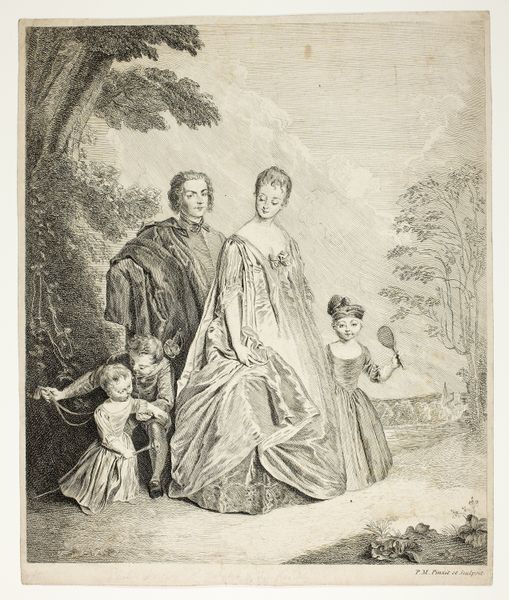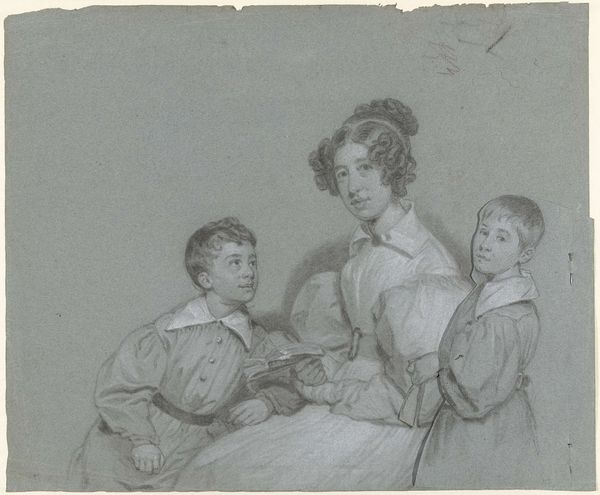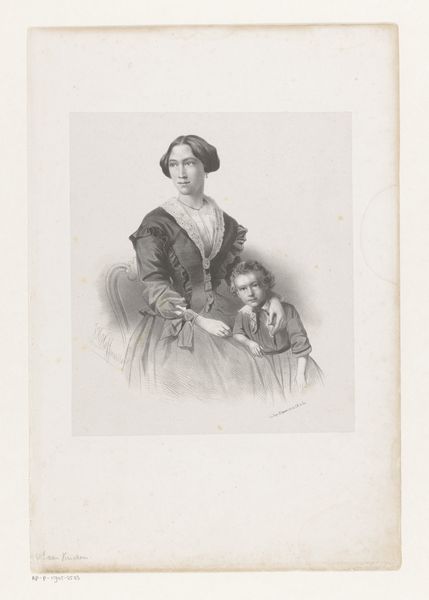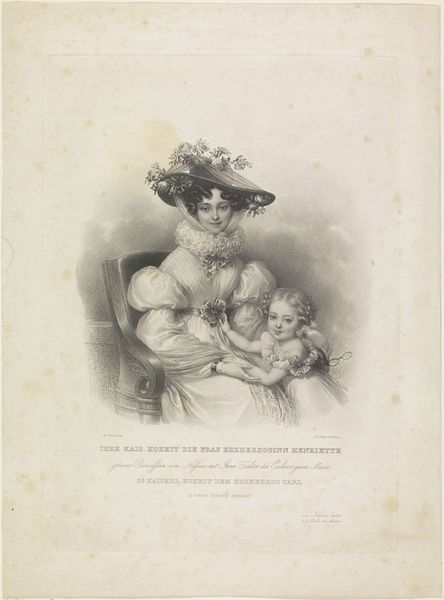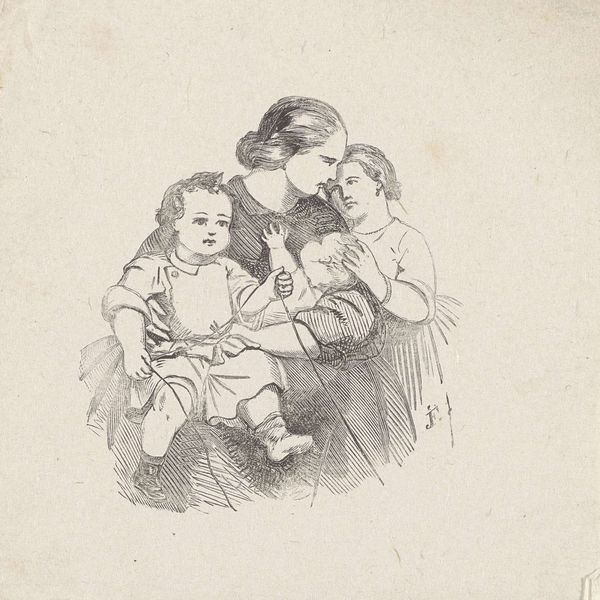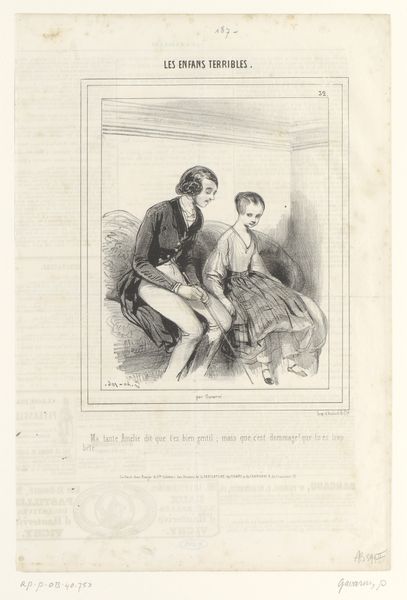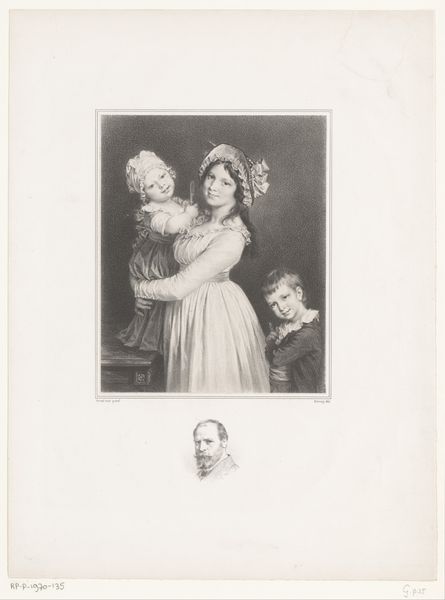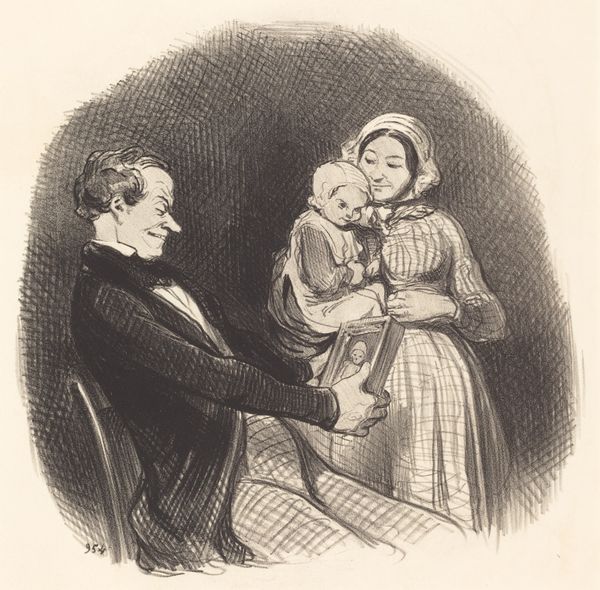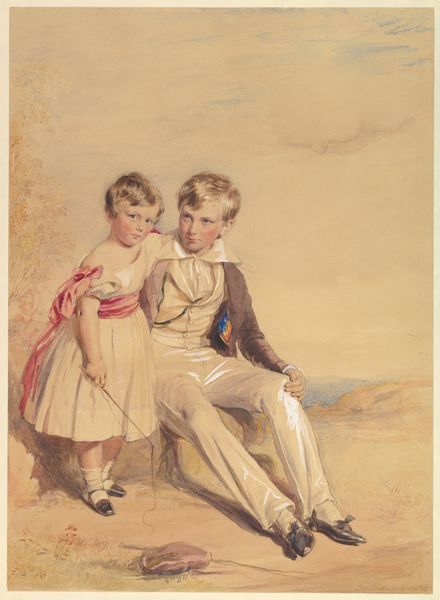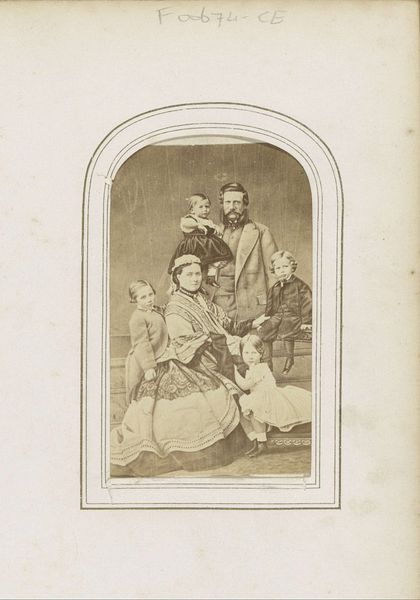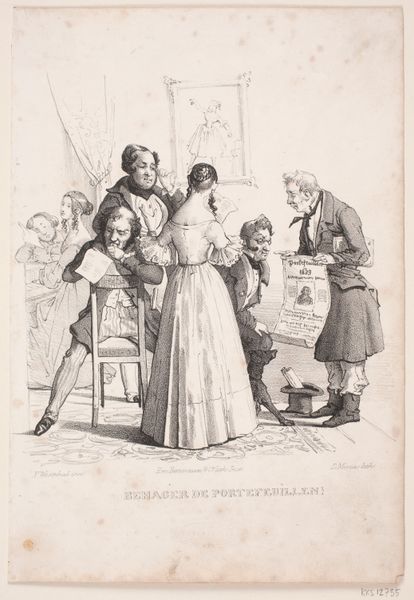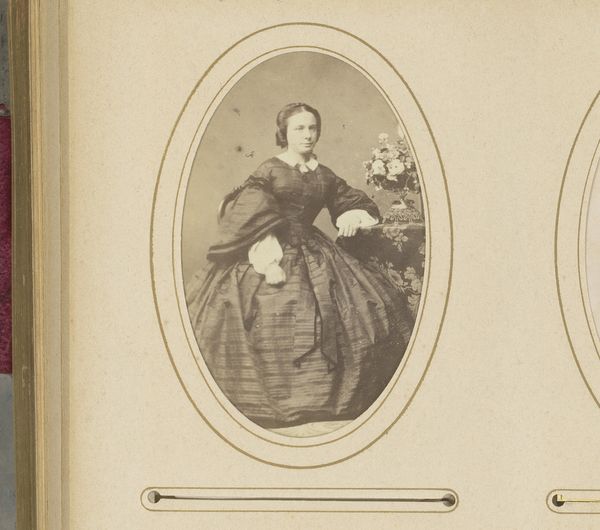
lithograph, print
#
portrait
#
lithograph
# print
#
portrait drawing
#
realism
Dimensions: 449 mm (height) x 337 mm (width) (plademaal)
Editor: Here we have a lithograph print entitled "Baron V. Hochschild med familie" from somewhere between 1786 and 1855 by Wilhelm Heuer, currently at the Statens Museum for Kunst. It’s a fascinating group portrait! I find myself wondering, what social dynamics might be at play in its creation? Curator: This portrait offers a glimpse into 19th-century bourgeois values. It depicts the baron, his wife, and their three children, and immediately, I ask: what power dynamics do you observe in the portrayal of gender and class within this family unit, and the society they occupied? Editor: I suppose there’s something inherently formal and perhaps staged about how the family is arranged. It doesn't seem particularly intimate or revealing. Is that a commentary in itself? Curator: Precisely. Consider the visual language: the baron is placed at a higher elevation, resting his hand confidently. Meanwhile, his wife is subtly lower, surrounded by their children, highlighting a constructed vision of paternal authority. The portrait also presents a specific image of the family aimed at cementing social standing. Can we see any evidence of economic disparity? Editor: You're right. It feels less like an intimate family scene and more like an attempt to project an image of wealth, status, and maybe even… dynastic stability. Curator: Notice also the absence of any other domestic staff who would’ve been a crucial component of such a household at the time. Whose stories are silenced, and how does this image actively reinforce the values of the bourgeois elite? Editor: It really opens my eyes to how even a seemingly simple family portrait can reflect such complex social structures. I now recognize this as a meticulously crafted performance. Curator: Absolutely! And by deconstructing these seemingly straightforward representations, we can unearth layers of power, privilege, and the deliberate shaping of historical narratives.
Comments
No comments
Be the first to comment and join the conversation on the ultimate creative platform.
